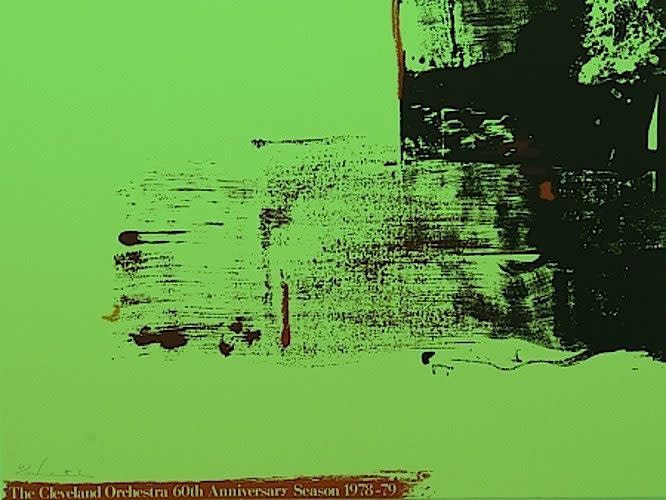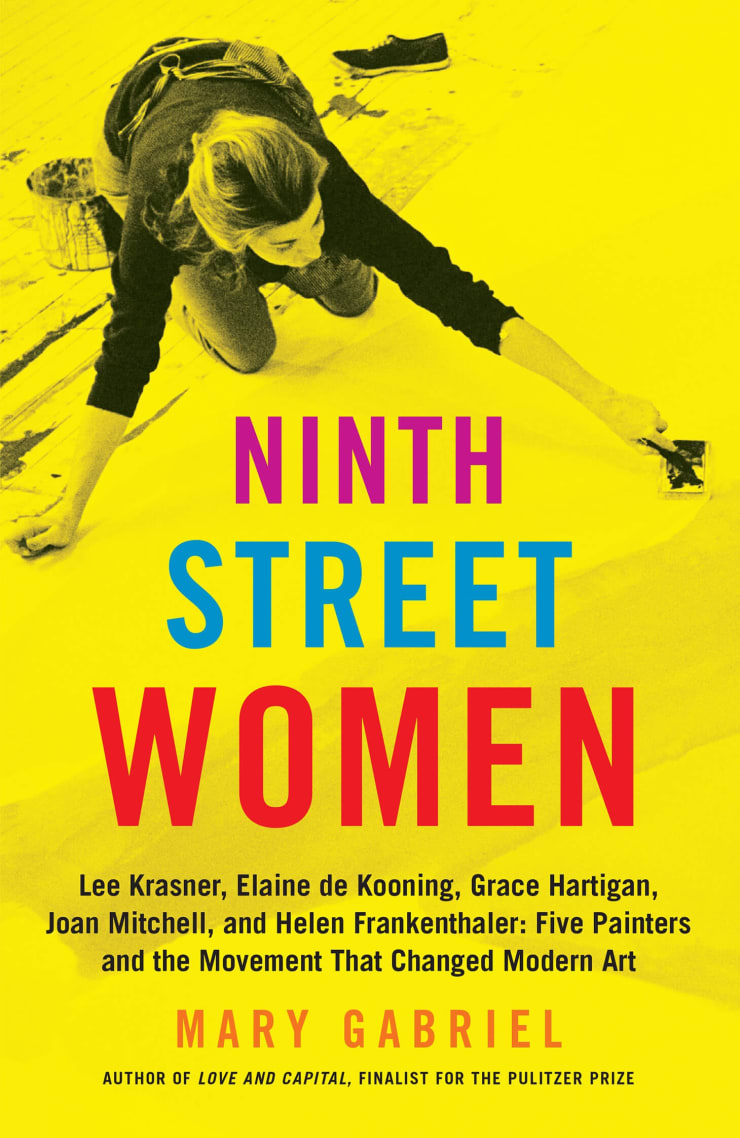Helen Frankenthaler was just 23 years old in 1952 when she painted Mountains and Sea. It wasn’t well received when it was first exhibited and she had to take the 7 x 10 foot painting back to her studio. Today it hangs in the National Gallery of Art in Washington and is considered one of the most seminal works of American Art. Abstract expressionist painter Morris Louis, a contemporary of Frankenthaler, described the painting as, “a bridge between Pollock and what was possible.”
Ninth Street Women
Mary Gabriel’s book Ninth Street Women: Lee Krasner, Elaine de Kooning, Grace Hartigan, Joan Mitchell, and Helen Frankenthaler: Five Painters and the Movement That Changed Modern Art, describes the impact that these women had on art in mid-century America. Gabriel writes about what Frankenthaler called her “beautiful trauma” when she saw an exhibit of Jackson Pollock’s works. Pollock’s paintings inspired Frankenthaler to put away her easel and spread large canvasses on her studio floor in the style of Pollock.
Instead of the heavy gestures that defined Pollock’s work, Frankenthaler used thinned oil paint on unprimed canvas. She called her technique soak-stain. It was her soak-stain technique that influenced Color Field painting a form-inspired, rather than emotional-inspired works.
Frankenthaler was one of the few women who were included in the ground-breaking 1951 Ninth Street Show, curated by Leo Castelli. The artists rented a downtown storefront and basement space at 60 9th Street for $70, far from Manhattan’s upscale galleries. MoMA director, Alfred Barr attended the opening and was amazed by the development of the New York School artists.
It wasn’t long after the 9th Street Show that many of the artists, including Helen Frankenthaler, were showing their works uptown.
Helen Frankenthaler’s Work at the Baker Museum Opening
The Baker Museum in Naples has been closed since the damage done by Hurricane Irma in 2017. After two years of renovation, the museum will re-open to the public on December 1, 2019.
Visitors will be greeted by an exhibit called 100 Iconic Works from the Permanent Collection which includes work by American artists such as Helen Frankenthaler, Alexander Calder, Robert Motherwell and other fine artists. The exhibition will run from December 1, 2019 through July 25, 2020.
Heroines of Abstract Expressionism
The current exhibit at the Fenimore Museum in Cooperstown, New York, features the work of Helen Frankenthaler and other female artists who contributed to the Abstract Expressionist movement.
The museum’s website says that the acclaim these artists deserve is long overdue: “For more than sixty years the contributions these women made to the movement were all but forgotten while works by men such as Jackson Pollock and Willem de Kooning have been canonized in the history of American art. It has taken the dedication of scholars and museum curators—and the commitment of a handful of prescient collectors like Friedman and Wakefield—to restore these women artists to their rightful place in the history of American art.” Heroines of Abstract Expressionism will run through December 31, 2019.
Helen Frankenthaler Fine Art Prints at VFA
Helen Frankenthaler created her first prints in 1961. She was reluctant to try printmaking and was coaxed by fellow artist Larry Rivers to visit Universal Limited Art Editions, a print studio set up by Russian immigrants Tanya and Maurice Grosman in their Long Island Garage in 1957.
Frankenthaler mastered lithography, etching and woodblock and became a masterful printmaker. Her skill allowed her to create the same beautiful, painterly feeling in print that she was able to achieve with her paintings.
She began working with master printmaker Kenneth Tyler around 1974, and was able to create prints, like Geisha (available at VFA) that equaled, and often exceeded, the elegance of her paintings.
Please contact us if you would like more information about Geisha, the Cleveland Orchestra Print or any of the other fine works available at VFA.






